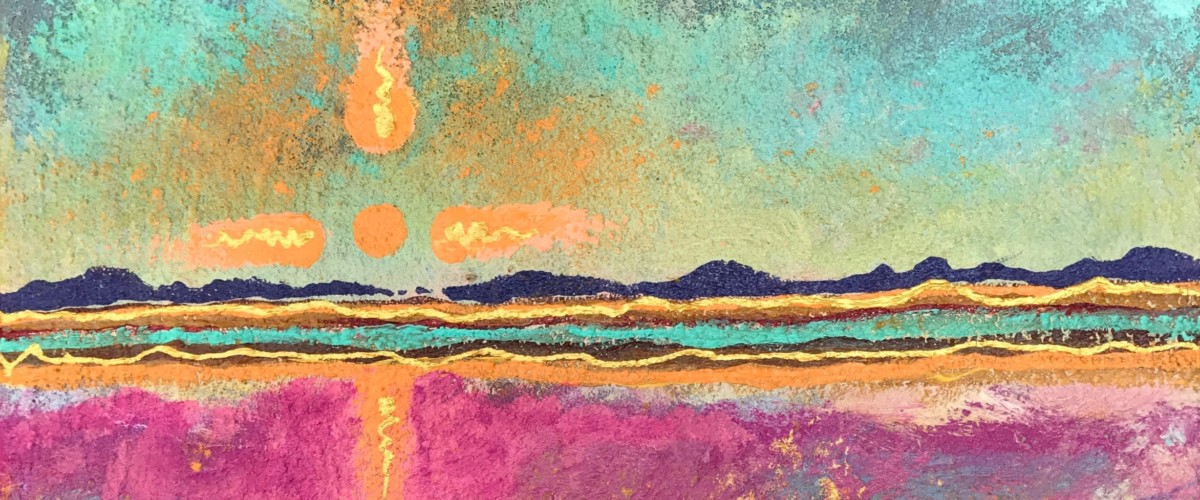In my last entry on the subject of failure, I gave a broad view of the subject. In this entry, I would like to paint with a smaller brush and talk about the mechanics of failure and creativity. I would like to begin by quoting two Japanese Master potters. For those who are not aware, the apprenticeship program for student potters in Japan is extremely difficult and thorough, but it produces stunning results.
Suketoshi Matsuyama says, “There is yet the most important thing: it is that failure makes good. Through failure, we can find ways to overcome. In failure, we find new beauty. Eventually, people have to learn for themselves. Just like I do. That is the power of failure.”
Shiho Kanzaki says, “There is much learning by trying and failing. If I told my students all the details of how-to-do, they might be successful one time. But by failing, they will have learned in a way that will cause them to be successful every time in the future. If I show them ‘how,’ they only know that technique and cannot change easily. But if I don’t show them ‘how,’ my students have to be thinking, thinking, thinking to learn many ways of working and making…then they can change their way of working easily, and make works that come from the heart.”
When I taught my college course on creativity, I had a section on what I called the “Juices of Creativity.” The following are some excerpts from that section.
The creative process begins when one has an experience so full that it has to come out. The creative act is a disturbing act which is uncomfortably filled with anxiety, stress, and pressure, both emotionally and physically. The creative act is a deliberate forsaking of a state of wellbeing. We don’t have to be creative. It is easier not to be. But creativity implies change. We are dissatisfied with something, or why else would we want to change it? Jesus said, “you can’t put new wine in old wineskins.” Picasso said, “Every act of creation is first an act of destruction” because we are getting rid of the old and are replacing it with the new. But there is a paradox here; creativity begins with anxiety but ends in exhilaration!
One thing that almost all creative people experience at some time is a phenomenon that I call “The Watcher at the Gates.” This ‘watcher’ sits within us and seeks to control all our creative activities. This ‘watcher’ is a ‘putter-offer,’ a ‘plant-waterer,’ a ‘floor sweeper-upper,’ a ‘studio cleaner-upper,’ a ‘telephone caller-upper’ because a lot of this should really be done and usually just at the time when you should begin the creative act. The ‘watcher’ tells you when it’s not right for creative work. It’s too hot or it’s too cold, or it’s too light or it’s too dark, you’re too tired or you’re too alert, you’re too sad or you’re too happy. No matter what your mood is or your feelings, it’s always the wrong time or place. Just wait and maybe tomorrow things will be better. Putter-offer. The psychologist Carl Jung once wrote a letter to his ‘watcher’ because it was so real. So did the author Gail Godwin. She sat down and wrote, “Dear ‘watcher,’ What is it that you’re so afraid I’ll do? Then I held his pen for him and he replied, ‘Failing!'” There is a very strong suspicion on my part that the ‘watcher’ is your rational, logical, left hemisphere of the brain trying to control the right hemisphere.
When I taught this to my college classes they all seemed to recognize this ‘watcher.’ But I have discovered that ‘failing’ is not the only ‘watcher.’ As for me, failure is never an issue. For me, the ‘fear’ is starting a long cycle of work. I know that once I put my hand to the plow, it will take me 3 to 4 months of serious, time-consuming involvement before I can finish my project. Because I did art fairs in the summer for 45 years and had a huge Christmas home show in December, I had to produce a large body of work which required a single focus. When I was finished, I was exhausted and needed rest, and when I had to start the cycles over again, there was a real dread of that prolonged commitment.
Some of my students listed other ‘watchers.’ Here are a few: The fear of being ‘found out.’ The fear of being vulnerable and exposing their true self. The fear of being wrong. The fear of criticism. The fear of disappointing themselves. The fear of not being good enough. I’m sure there are many others, but in order to overcome this ‘watcher,’ we must first identify the enemy. Once you know what it is, you can face it head on and it can no longer have power over you. Sometimes, the watcher can look like laziness. But in reality, laziness is nothing more than an outward sign of an inner fear of failure.
Another contributing factor that may affect us negatively is a misconception about what creativity is. There are times when people believe the myth that to be creative, there should be no limits or restrictions placed upon the creator. “I need freedom, man, that is all I need!” I grew up in the ’60s where abstract expressionism was in vogue and the art students rebelled against any type of authority or discipline. They would smoke their weed and thought they were being free and loose and creative. They quoted one abstract painter, Kurt Schwitters, whose mantra was, “Anything an artist spits is art.” Sadly, what most of my youthful colleagues produced wasn’t art at all. It was just a mess. They believed the lie that all you have to do is give a student a brush and a tube of paint and let them do anything they want and they will automatically be creative.
But true creative activity is defined by principles, limits, and knowledge of your tools and materials. Let me give you an example of how this works. I call this the “Circle of Discipline.” I have worked as an artist for 50 years, specializing most of the time in clay. Imagine a large circle that represents my understanding of my art and materials. Within that circle, I can move freely because I have mastered that realm. Now imagine a new student coming into my class and saying to me, “Mr. Wilson, I love your work, and I want to make things just like you do.” Unfortunately, his abilities and knowledge of the medium of clay don’t match his aspirations. So the moment he puts his hand to the potter’s wheel, he discovers that his journey is going to be a long one. He does not have any ‘freedom’ in that medium to be creative yet. So his Circle of Discipline will be quite small.
Here is a question: When can a violinist become ‘creative’ with the violin? Can they be creating beautiful new songs and explore unique ways to finger the strings in order to discover their own voice on the second day of practice? Of course not! They will only be truly creative when they have mastered their craft and can move freely within it. Hence, the structure of principals, limits, and knowledge of tools and materials must be mastered before anything of true worth can be created.
Let me go back to the Circle of Discipline. So what happens when I move outside of my understanding of my craft? What happens when I go outside the boundaries of my understanding by trying something new? If I try something new and it works, I have just expanded my Circle of Discipline. Hooray! But what happens if I go outside my circle and it fails? Well, you have just expanded your Circle of Discipline, just like when you succeeded. Now you know what doesn’t work, and that is knowledge.
Thomas Edison said, “I know 1800 ways not to make a light bulb.” All of that failure was a part of his success. So here is the good news. Whether you succeed or fail when you go outside of your circle, the pay is the same! So why do we fear failure? Only when you are willing to fail gladly will you know the feeling of freedom. As your knowledge expands regarding discipline, your freedom expands in ratio.
Let’s close this section with some quotes:
“Failure is the opportunity to begin again, more intelligently.” Henry Ford
“The man who makes no mistakes does not usually make anything.” William Magee
“Creativity is allowing yourself to make mistakes. Art is knowing which ones to keep.” Unknown, (Maybe Picasso)
“Men succeed when they realize that their failures are the preparations for their victories.” Ralph Waldo Emerson
“When we walk to the edge of all the light we have and take the step into the darkness of the unknown, we must believe that one of two things will happen. There will be something solid for us to stand on or we will be taught how to fly!” Frank Outlaw

Featured and In-Text Images Painted by Gary Wilson















Comments are closed.